Ditapis dengan
E-book A Grammar of Paunaka
The aim of this work is to provide a detailed grammatical description of the Pau-naka language (ISO 639-3: pnk, Glottocode: paun1241), a critically endangered(cf. Krauss 2007: 6) Southern Arawakan language spoken in the Chiquitania, aregion in the lowlands of Eastern Bolivia, see Figure 1.1.The data which forms the basis for this analysis was collected by me duringfour fieldwork trips (2011, 20…
- Edisi
- -
- ISBN/ISSN
- 9783961104352
- Deskripsi Fisik
- 813 hlm
- Judul Seri
- -
- No. Panggil
- 410 TER a
E-book The Verb in Nyakyusa : A focus on tense, aspect, and modality
This monograph deals with the verb in Nyakyusa, a Bantu language of south-western Tanzania. AsNurse (2008: 21) puts it, “Bantu languages are ‘verby’, thatis, they are morphologically agglutinating languages, expressing by verbal inflec-tion what other languages may express lexically or syntactically.” Grammaticalcategories marked on the verb include subject, object, negation, a number o…
- Edisi
- 2nd ed.
- ISBN/ISSN
- 9783961102945
- Deskripsi Fisik
- 405 hlm
- Judul Seri
- -
- No. Panggil
- 410 PER t
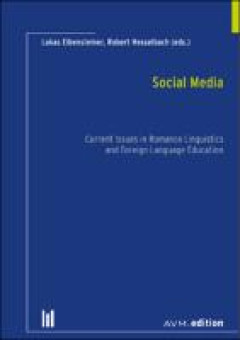
E-book Social Media: Current Issues in Romance Linguistics and Foreign Langua…
This anthology brings together cutting-edge research and insightful analysis from experts in linguistics and foreign language education. Applying different methodological approaches to the analysis of social media, researchers from different fields explore how platforms like Twitter, Instagram, and YouTube are reshaping communication, language learning, and teaching methodologies. From the powe…
- Edisi
- -
- ISBN/ISSN
- 9783954771622
- Deskripsi Fisik
- 247 pages, ilus.
- Judul Seri
- -
- No. Panggil
- 410 ECK s
E-book Institutional Translator Training
In its 15 chapters, this edited volume explores translation-related training in institutional settings on a global scale. It is divided into three parts which cover the following: (1) Competences expected and/or required on the part of institutional translators and surveyed by several survey exercises, (2) Practices of translator training at university level, and (3) actual Practices …
- Edisi
- -
- ISBN/ISSN
- 9781003225249
- Deskripsi Fisik
- 264 hlm
- Judul Seri
- -
- No. Panggil
- 410 BAU i
E-book Arabic in Contact
Of course, languages are not in contact. We could say that speakers of languages are, but even this would be misleading, as we would bestow an undue role to in-dividuals in their capacity as speakers, and at the same time forget that words and patterns spread when they are heard, rather than when they are uttered. As Thomason (2001: p. 2) puts it, “in the simplest definition, language contact…
- Edisi
- -
- ISBN/ISSN
- 9789027263629
- Deskripsi Fisik
- 380 hlm
- Judul Seri
- -
- No. Panggil
- 410 HER a
E-book The Writing Culture of Ancient Dad?n : A Description and Quantitative …
This work focuses the social context of writing in ancient Western Arabia in the oasis of ancient Dadan, modern-day al-?Ul? in the northwest of the Arabian Peninsula between the sixth to first centuries BC. It offers a description and analysis of the language of the inscriptions and the variation attested within them. It is the first work to perform a systematic study of the linguistic variatio…
- Edisi
- -
- ISBN/ISSN
- 9789004512634
- Deskripsi Fisik
- 343 hlm
- Judul Seri
- -
- No. Panggil
- 410 KOO t
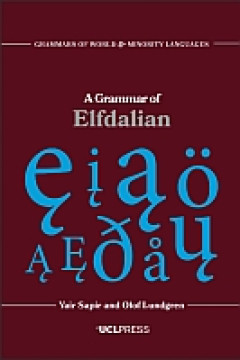
E-book A Grammar of Elfdalian
Elfdalian is the language traditionally spoken in Övdaln (Älvdalen), central Sweden. Due to its linguistic differences to Swedish, coupled with the determination of the speech community, several attempts have been made to acquire an official recognition of Elfdalian as a minority language in Sweden. However, despite growing interest in documenting and revitalising Elfdalian, it is still regar…
- Edisi
- -
- ISBN/ISSN
- 9781787355392
- Deskripsi Fisik
- 404 halaman, ilus.
- Judul Seri
- -
- No. Panggil
- 410 SAP a
E-book Voice Syncretism
This book is a typological study of resemblance in formal verbal marking be-tween two or more of the following seven clausal constructions: passives, antipas-sives, reflexives, reciprocals, anticausatives, causatives, and applicatives. Follow-ingMalchukov (2015;2016;2017),Creissels (2016), andZúñiga & Kittilä (2019),these constructions are called voices. In turn, their formal marking is call…
- Edisi
- -
- ISBN/ISSN
- 9783961103195
- Deskripsi Fisik
- 339 hlm
- Judul Seri
- -
- No. Panggil
- 410 BAH v
E-book Methods in prosody : A Romance language perspective
The field of prosody research belongs to those linguistic disciplines that have de-veloped rapidly in recent decades. This is mainly due to the appreciation it hasreceived in theoretical studies of grammar, but also to the technological revo-lution that has resulted in the widespread availability of software dedicated toconducting analyses and calculating statistics. All stages of experimental …
- Edisi
- -
- ISBN/ISSN
- 9783961101047
- Deskripsi Fisik
- 296 hlm
- Judul Seri
- -
- No. Panggil
- 410 FEL m
E-book Honorary Doctorate Prof.Mary Beckman
Today we celebrate the 100th anniversary of the Radboud University. This university’s anniversary would not be complete without an honorary doctor in the language sciences. We feel privileged that you agreed to become an honorar y doctor of Radboud University.You have contributed so much to the language sciences. At the start of your career, you…
- Edisi
- -
- ISBN/ISSN
- -
- Deskripsi Fisik
- -
- Judul Seri
- -
- No. Panggil
- 410 BEC h
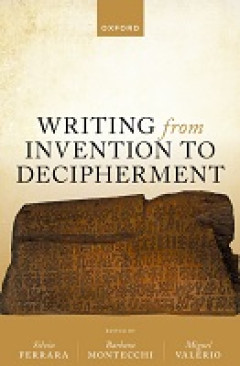
E-book Writing from Invention to Decipherment
This book corrals global scholarship on ancient writing systems from China, Mesopotamia, Central America, the Mediterranean, to more recent newly created scripts such as the Rongorongo from Easter Island, the Caroline Island scripts, as well as the alphabet. The aim is to dig into the foundations of writing and showcase the complexities and varieties of scripts, from their invention to the pote…
- Edisi
- -
- ISBN/ISSN
- 9780198908746
- Deskripsi Fisik
- 349 halaman, ilus.
- Judul Seri
- -
- No. Panggil
- 930 FER w
E-book Velar Fronting in German Dialects : A Study in Synchronic and Diachron…
The distribution of German dorsal fricatives – palatal [ç] and velar [x] – haspreoccupied linguists of diverse theoretical persuasions for over ninety years.Scholars who have discussed the patterning of those sounds include the follow-ing:Jones (1929),Hermann (1932),Bloomfield (1933),Trubetzkoy (1939),Moul-ton (1947),Leopold (1948),Jones (1950),Trim (1951),Dietrich (1953),Trost (1958),Heik…
- Edisi
- -
- ISBN/ISSN
- 9783961103980
- Deskripsi Fisik
- 922 hlm
- Judul Seri
- -
- No. Panggil
- 410 HAL v
E-book The Writing of Disaster - Literary Representations of War, Trauma and …
In the past few years a number of book-length English-language studies of the cultural dimensions of disasters in modern Japan have appeared in print.2 The question arises: Why do we need another? The reason is that none of these books concentrates solely on literature, as this book does, and only a few of the volumes treat the disaster spawned by World War II—the most destruc-tive military c…
- Edisi
- -
- ISBN/ISSN
- 9783631808290
- Deskripsi Fisik
- 276 hlm
- Judul Seri
- -
- No. Panggil
- 410 MOR t
E-book Formulaic Language : Theories and Methods
Of the many types of multiword expressions identified in the literature, the cur-rent study focuses on a small, structurally defined set of possible prefabricatedsequences (prefabs), in particular, attributive adjective-noun sequences as usedin American English conversation. The paper examines the role of frequency of One source of interest in multiword expressions (MWEs) derived from corpusstu…
- Edisi
- vol.5
- ISBN/ISSN
- 9783961103102
- Deskripsi Fisik
- 241 hlm
- Judul Seri
- -
- No. Panggil
- 410 TRK f

E-book Reflexively Speaking : Metadiscourse in English as a Lingua Franca
Ten years ago, I remarked on the surprisingly small proportion of metadiscoursestudies that investigated spoken discourse compared to the total amount of meta-discourse research (Mauranen 2012). This is still true, even though much more re-search has been devoted to spoken discourses since then. The proportional gapremains enormous. If we look for studies addressing not only speaking in general…
- Edisi
- -
- ISBN/ISSN
- 9783110295498
- Deskripsi Fisik
- 249 hlm
- Judul Seri
- -
- No. Panggil
- 410 MAU r
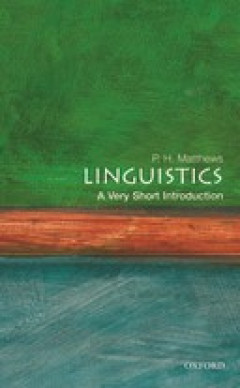
E-book Linguistics: A Very Short Introduction
Linguistics: A Very Short Introduction considers a subject that falls in the gap between arts and science, on the edges of which fascinating discoveries and important problems are found. Beginning with the oldest, ‘arts’ end of the subject, it moves chronologically through to the newest research — the ‘science’ aspects. Themes included are: the prehistory of languages and their common…
- Edisi
- -
- ISBN/ISSN
- 9780192801487
- Deskripsi Fisik
- 289 halaman
- Judul Seri
- -
- No. Panggil
- 410 MAT l
E-book Getting Others to do Things : A Pragmatic Typology of Recruitments
Research in the fields of conversation analysis, ethnomethodology, and inter-actional linguistics is perhaps closest to the approach taken here, for a few rea-sons. One is that the empirical source of data is recordings of informal interaction.Another is that the units of analysis are not clauses or sentences but moves in con-versational sequences (Wootton 1981;1997;Lindström 2005;Vinkhuyzen &…
- Edisi
- -
- ISBN/ISSN
- 9783961102785
- Deskripsi Fisik
- 435 hlm
- Judul Seri
- -
- No. Panggil
- 410 ENF g
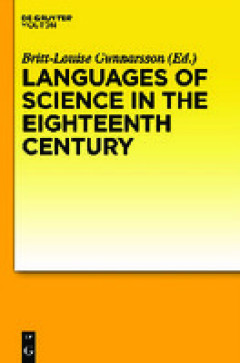
E-book Languages of Science in the Eighteenth Century
The eighteenth century is an important period both in the history of science and in the history of languages. In this volume, seventeen authors explore, from a variety of angles, the construction of a scientific language and discourse. The chapters explore the forming of scientific communities, the emergence of new languages of science, the spread of scientific ideas, and the development of sci…
- Edisi
- -
- ISBN/ISSN
- 9783110255065
- Deskripsi Fisik
- 381 halaman
- Judul Seri
- -
- No. Panggil
- 410 GUN l
Aspectuality
Over the past thirty years, there has been growing interest in aspect, not somuch in traditional Romance research but rather in typological studies. Here,there has been intensive and increasing concern with the combination of those grammatical verbal categories that are often realised by morphological syncre-tism in many of the world’s languages, the so-called TMA categories: tense,mode and a…
- Edisi
- -
- ISBN/ISSN
- 9783110562088
- Deskripsi Fisik
- 283 hlm
- Judul Seri
- -
- No. Panggil
- 410 DES a

E-book A Grammar of Nese
Nese is a dying Oceanic language spoken on the island of Malekula, in northern Vanuatu. This book, based on first-hand fieldwork data, and without adhering to any particular syntactic framework, presents a synchronic grammatical description of Nese's phonology and syntax. Despite being on the verge of extinction, with fewer than 20 living speakers, the language displays intriguing properties—…
- Edisi
- -
- ISBN/ISSN
- 9781760465568
- Deskripsi Fisik
- 350 halaman
- Judul Seri
- -
- No. Panggil
- 410.72 GRE a
E-book A Dictionary of Linguistics and Phonetics
Continued, in that and the subsequent four prefaces, in the following way. We could use the techniques, well established, which have provided dictionaries of excellence, such as the Oxford English Dictionary. The painstaking scrutiny of texts from a range of contexts, the recording of new words and senses on slips, and the systematic correlation of these as a preliminary to representing pattern…
- Edisi
- 6th ed.
- ISBN/ISSN
- 9781405152976
- Deskripsi Fisik
- 555 hlm
- Judul Seri
- -
- No. Panggil
- 410 CRY a
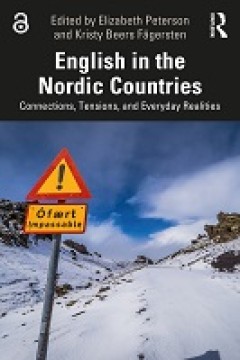
E-Book English in the Nordic Countries: Connections, Tensions, and Everyday R…
People in the Nordic states – Norway, Sweden, Finland, Denmark, and Iceland – rank as among the most proficient speakers of English in the world. In this unique volume, international experts explore how this came to be, what English usage and integration looks like in different spheres of society and the economy in these countries, and the implications of this linguistic phenomenon for lang…
- Edisi
- -
- ISBN/ISSN
- 9781032224671
- Deskripsi Fisik
- 261 halaman
- Judul Seri
- -
- No. Panggil
- 410 PET e
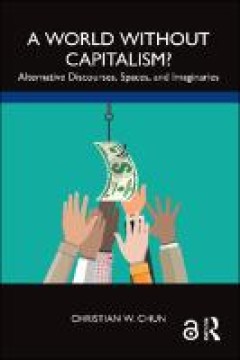
E-book A World without Capitalism?
In this book, Christian W. Chun examines the ways in which identities, discourses, and topographies of both capitalist and anti-capitalist imaginaries and realities are embodied in the everyday practices of people. A World without Capitalism? is a sociolinguistic ethnography that explores the heretofore limited research in applied linguistics and sociolinguistics on the discursive and materiali…
- Edisi
- -
- ISBN/ISSN
- 9781000484434
- Deskripsi Fisik
- 200 halaman
- Judul Seri
- -
- No. Panggil
- 410.72
E-book Speech and Language Processing : An Introduction to Natural Language P…
One of the unsung successes in standardization in computer science has been the regular expression (often shortened to regex), a language for specifying text search regular expression strings. This practical language is used in every computer language, word processor, and text processing tools like the Unix tools grep or Emacs. Formally, a regular expression is an algebraic notation for charact…
- Edisi
- -
- ISBN/ISSN
- -
- Deskripsi Fisik
- 636 hlm
- Judul Seri
- -
- No. Panggil
- 410 JUR s
E-book Hate Speech
The termhate speechrecognises a wide range of harmful social practices anddiscourses. Let us take, for instance, Islamophobic blogs, cross burnings, racialepithets, or dehumanising pictures of Jews. If all these social activities fallunder hate speech, they must have certain elements or features in common. Itmight therefore be reasonable to think that a definition of hate speech shouldcomprise …
- Edisi
- -
- ISBN/ISSN
- 9783110672619
- Deskripsi Fisik
- 211 hlm
- Judul Seri
- -
- No. Panggil
- 410 GUI h
E-book A Sketch Grammar of Pondi
his is a grammatical sketch of Pondi [ISO 639-3 lnm, Glottocode lang1328], a severely endangered language spoken by fewer than 300 people, almost all of whom live in a single village in the Sepik region of Papua New Guinea (PNG). Pondi is a non-Austronesian (i.e. Papuan) language, belonging to the Ulmapo branch of the Keram family. In this introductory chapter,…
- Edisi
- -
- ISBN/ISSN
- 9781760463847
- Deskripsi Fisik
- 215 hlm
- Judul Seri
- -
- No. Panggil
- 410 BAR a
E-book Culinary Linguistics : The Chef's Special
Eating and talking are universal human traits. Every healthy human being eats and talks; every society or group eats and talks. Both language and food are culturally dependent and vary according to factors such as gender, age, or situational context, or even lifestyle. There are vast differences both in the food-related behavior of different cultures as well as in the lan…
- Edisi
- -
- ISBN/ISSN
- 9789027271716
- Deskripsi Fisik
- 365 hlm
- Judul Seri
- -
- No. Panggil
- 410 GER c
E-book The Language of Jokes in the Digital Age : Viral Humour
At this moment in time, many people inhabit two worlds. One is the world as we know it, the “real” world that we inhabit and that physically surrounds us. The world that we can touch and feel. The other is a more distant world in the material sense, namely the world online with which we engage via technology. While these two worlds a…
- Edisi
- -
- ISBN/ISSN
- 9781315146348
- Deskripsi Fisik
- 179 hlm
- Judul Seri
- -
- No. Panggil
- 410 CHI t
E-book Communicating Linguistics Language, Community and Public Engagement
In his 1980 book Language: The Loaded Weapon, Dwight Bolinger decries the number of ‘shamans,’ as he calls them, who comment without authority (and usually without recourse to evidence) on the use of language. The problem, he says, is that ‘they are almost the only people who make the news when language begins to cause trouble, and someone must answer the …
- Edisi
- -
- ISBN/ISSN
- 9781003096078
- Deskripsi Fisik
- 265 hlm
- Judul Seri
- -
- No. Panggil
- 410 PRI c
 Karya Umum
Karya Umum  Filsafat
Filsafat  Agama
Agama  Ilmu-ilmu Sosial
Ilmu-ilmu Sosial  Bahasa
Bahasa  Ilmu-ilmu Murni
Ilmu-ilmu Murni  Ilmu-ilmu Terapan
Ilmu-ilmu Terapan  Kesenian, Hiburan, dan Olahraga
Kesenian, Hiburan, dan Olahraga  Kesusastraan
Kesusastraan  Geografi dan Sejarah
Geografi dan Sejarah